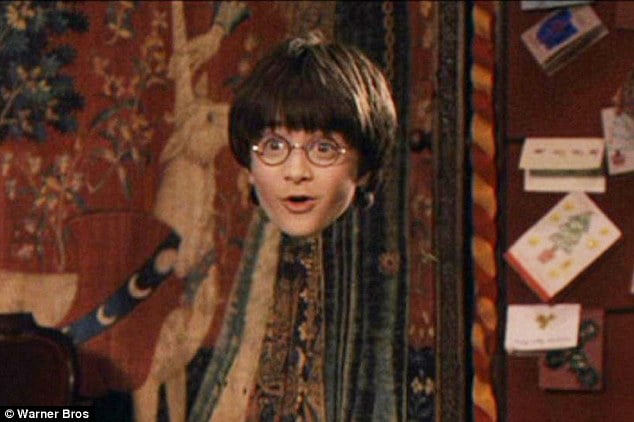Researchers reveal real life invisibility cloak – Researchers around the world are racing to develop Harry Potter-worthy invisibility cloaks. But, because of the way they bend light, current designs have either required bulky equipment, or have drawn more attention to the object than they deflect. Now, a group of German researchers has developed a portable invisibility cloak that can effectively shield objects while being small enough to use in classrooms.
- The invisibility cloak uses diffused scattered light to hide small objects
- Object to be concealed is put inside a cylinder coated with acrylic paint
- Tube has organic polymers that make light scatter and hide the object
- Scientists hope the cloak will inspire the next generation of scientists

It can’t hide a human, but it can make small objects disappear from sight, according to researchers from the Karlsruhe Institute of Technology (KIT). Scientists hoping to divert light around an object to render it invisible must find a way to compensate for the increased distance the light must now travel.
If you were in a car and you had to change your route, for instance, you might solve this problem by changing your speed. The greater distance is offset by the higher speed limit. Unfortunately, light is a bit more challenging.
Because relativity prevents mass from traveling faster than the vacuum speed of light, there’s no way to further speed up the detoured light in a vacuum or in air.
To address this challenge, the KIT team constructed their cloak from a light-scattering material. By scattering light, the material slows down the effective propagation speed of the light waves through the medium. Then the light can be sped up again to make up for the longer path length around the hidden object. In this cloak, the object to be concealed is placed inside a hollow metal cylinder coated with acrylic paint, which diffusely reflects light.
The tube is embedded within a block of polydimethylsiloxane, a commonly used organic polymer, doped with titanium dioxide nanoparticles that make it scatter light. ‘Our cloak takes advantage of the much lower effective propagation speed in light-scattering media,’ said Robert Schittny, who led the research project.

‘As we seemingly slow down the light everywhere, speeding it up again in the cloak to make up for the longer path around the core is not a problem.’ If the average time it takes light to travel through the polydimethylsiloxane block is in just the right proportion to the average time it takes to travel through the cloak, the core will become invisible.
The completely solid-state cloak can be easily transported to classrooms for demonstrations. ‘It is a macroscopic cloak that you can look at with your bare eyes and hold in your hands,’ said Schittny. ‘With a reasonably strong flashlight in a not too bright room, it is very easy to demonstrate the cloaking. ‘That means no fancy lab equipment, no microscopes, no post-processing of measurement data. The effect is just there for everyone to see.’
HOW DOES IT WORK?
- The invisibility cloak works using diffused scattered light. Like frosted window panes, it lets light in but hides the light source.
- By scattering light, the material slows down the effective propagation speed of the light waves through the medium.
The light can then be sped up to make up for the longer path length around the hidden object. - In this cloak, the object to be concealed is placed inside a hollow metal cylinder coated with acrylic paint, which diffusely reflects light.
- The tube is embedded within a block of polydimethylsiloxane, a commonly used organic polymer, doped with titanium dioxide nanoparticles that make it scatter light.
- If the time it takes light to travel through the polydimethylsiloxane block is in just the proportion to the time it takes to travel through the cloak, the core will become invisible.
Source: dailymail.co.uk




